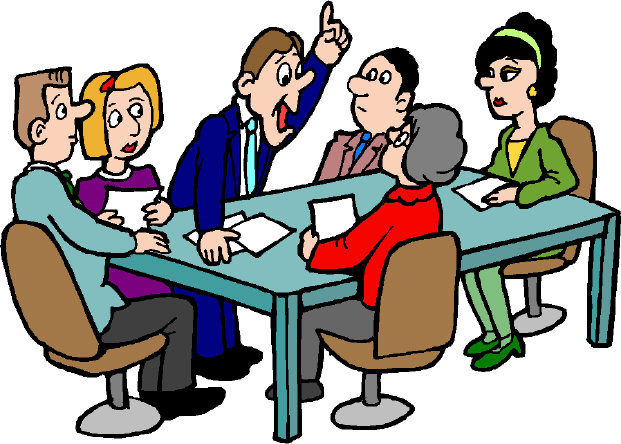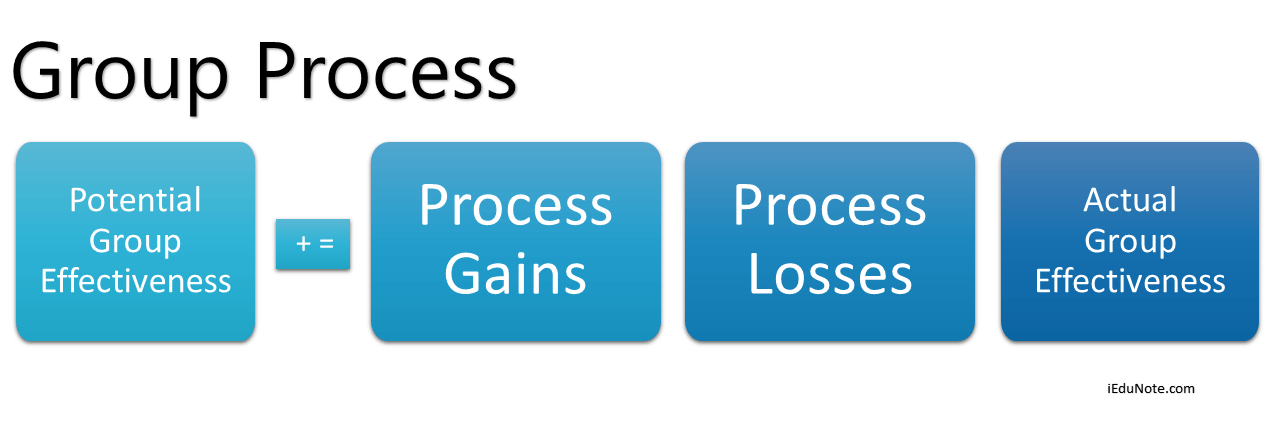Unveiling the dynamics of groups: definition, functions, types, and why individuals join. Explore the power of cohesion and achieving collective objectives.
What is a Group?
A group is a collection of individuals who interact with each other such that one person’s actions impact the others. In other words, a group is defined as two or more individuals, interacting and interdependent, who have come together to achieve particular objectives. In organizations, most work is done within groups.
Groups where people get along, feel the desire to contribute to the team, and are capable of coordinating their efforts may have high performance levels.
The group can be defined as a collection of individuals who have regular contact and frequent interaction, mutual influence, the common feeling of camaraderie, and who work together to achieve a common set of goals.
Some other simple ways: can give the definition of a group
- Several people or things are together or in the same place.
- Some shared activity, interest, or quality connects several people.
- Several individuals assembled or have some unifying relationship.
- A set of people who meet or do something together because they share the same purpose or ideas.
The term group can be defined in several different ways, depending on the perspective that is taken.
A comprehensive definition would say that a group exists in an organization and its members:
- Are motivated to join.
- Perceive the group as a unified unit of interacting with people.
- Contribute in various amounts to the group processes (that is, some people contribute more time or energy to the group than others).
- Reach agreements and have disagreements through various forms of interaction.
Functions of Groups

The organizational functions of groups help to realize an organization’s goals.
Such functions include the following:
- Working on a complex and independent task that is too complex for an individual to perform and that cannot be easily broken down into independent tasks.
- Generating new ideas or creative solutions to solve problems that require inputs from several people.
- Serving liaison or coordinating functions among several workgroups whose work is to some extent independent.
- Facilitating the implementation of complex decisions. A group composed of representatives from various working groups can coordinate the activities of these interrelated groups.
- Serving as a vehicle for training new employees, groups teach new members methods of operations and group norms.
The list is not comprehensive. The importance of groups in organizations cannot be overemphasized because most of the organizational activities are carried out by groups.
Since jobs in organizations are becoming more complex and interdependent, the use of groups in performing task functions will become increasingly important.
One of the most common findings from the research on groups in organizations is that most groups turn out to have both formal and informal functions; they serve the needs of both organizational and individual members.
Psychological groups, therefore, may well be the key unit for facilitating the integration of organizational goals and personal needs.
For example, a formal workgroup in an industrial establishment often evolves into a psychological group that meets a variety of its members’ psychological needs.
If this process occurs, the group often becomes the source of much higher levels of loyalty, commitment, and energy in the service of organizational goals that would be possible if the members psychological needs had to be met elsewhere.
15 Types of Groups

Groups may be classified according to many dimensions, including function, personal involvement, and organization. 15 types of groups are;
Formal Groups
Formal groups are created to achieve specific organizational objectives. Usually, they are concerned with the coordination of work activities.
People are brought together based on different roles within the organization’s structure. The nature of the task to be undertaken is a predominant feature of the formal groups.
Goals are identified by management and short and rules relationships and norms of behavior established. Formal groups chain to be related to permanent, although there may be changes in actual membership.
However, temporary formal groups may also be created by management, such as project teams in a matrix organization.
The formal groups are formed by the organization to attain certain goals. These groups can be classified into task and project groups.
Groups formed for the purpose of completing specific projects or tasks are called project groups or task forces. This group remains in existence for a limited period of time and disappears after the goals of the project or tasks are attained.
Informal Groups
There will always be an informal structure within the organization’s formal structure.
The formal structure of the organization and system of role relationships, rules, and procedures, will be augmented by interpretation and development at the informal level.
Informal groups are based more on personal relationships and the agreement of group members than on defined role relationships. They serve to satisfy psychological and social needs not necessarily related to the tasks to be undertaken.
Groups may devise ways of attempting to satisfy members’ affiliations and other social motivations that are lacing in the work situation, especially in industrial organizations.
These groups are formed by organizational members to satisfy their common interests. For example, employees may join an interest group to serve on the United Way campaign, to discuss computer software, or to seek redress of their grievances from management.
These groups are formed by organizational members without any direction from management. These groups exist to satisfy certain needs not met by the formal groups.
Sometimes, the goals of the formal and informal groups are not consistent; they are in conflict. Three types of informal groups are interest, reference, and friendship groups.
Managed Groups
Groups may be formed under a named manager, even though they may not work together much. They have the main thing in common: the manager and perhaps a similar type of work.
Process Groups
The process group acts together to enact a process, going through a relatively fixed set of instructions. The classic environment is a manufacturing production line, where every movement is prescribed.
There may be little interaction within process groups, or it is largely prescribed, for example, where one person hands something over to another.
Semi-Formal Groups
Many groups act with less formality, in particular where power is distributed across the group, forcing a more collaborative approach that includes- negotiation rather than command and control.
Families, communities, and tribal groups often act in semi-formal ways as they both have nominal leaders, yet members can have a high degree of autonomy.
Goal Groups
The goal group acts together to achieve a shared objective or desired outcome. Unlike the process groups, there is no clear instruction on how they should achieve this, although they may use some processes and methods along the way.
As there is no detailed instruction, the members of the goal group need to bring more intelligence, knowledge, and experience to the task.
Learning Groups
The learning group comes together to increase their net knowledge. They may act collaboratively with discussion and exploration or be taught with a teacher and a syllabus.
Problem-Solving Groups
Problem-solving groups come together to address issues that have arisen. They have a common purpose in understanding and resolving their issue, although their different perspectives can lead to particular disagreements.
Problem-solving may range along a spectrum from highly logical and deterministic, to uncertain and dynamic situations where creativity and instinct may be better ways of resolving the situation.
Friendship Groups
Groups often develop because individual members have one or more common characteristics. We call these formations of friendship groups.
Social alliances, which frequently extend outside the work situation, can be based on similar age or ethnic heritage, support for Kolkata Knight Riders cricket, or the holding of similar political views, to name just a few such characteristics.
These groups are formed by employees to satisfy their social needs, such as friendship, support, esteem, and belongingness.
Employees, for example, may join such a group to play golf or cards, watch movies, or discuss political events. These groups may exist beyond the formal organization because they satisfy certain human needs.
Interest Groups
People who may or may not be aligned into a common command may affiliate to attain a specific objective with which each is concerned. This is an interest group.
Employees who band together to alter their vacation schedules, support a peer who has been fired, or seeks improved working conditions represent the formation of a united body to further their common interest.
Task Groups
Groups that are formed around certain tasks or functions and remain in existence for a long period of time are called task or functional groups.
Fiefler (1967) further classified task groups into three types according to the nature of task interdependencies among group members in attaining their group objectives. The three types of task groups are interacting, coaching, and counteracting.
Interacting Group
In this group, the performance of a task by a member depends on the completion of the task assigned to another member. A production team on the assembly line, where the output of one worker becomes the input of another worker, is an example of an interacting group.
Coaching Group
This is a group in which the members perform their functions relatively independently of each other. Examples of this type of group are faculty groups whose members perform their teaching and research functions relatively independently of each other.
Counteracting Group
This is composed of persons who work together for the purpose of negotiating and reconciling conflicting opinions and purposes. This type of group is exemplified by labor-management negotiation.
Reference Groups
Important groups to which individuals belong or hope to belong and with whose norms individuals are likely to conform.
It is important to recognize that informal groups are an important part of organizational life. Baron and Greenberg (1990) recognize that “informal friendship groups can have very beneficial effects on the organizational function.”
Differences between Formal Group and Informal Group
| Basis for Comparison | Formal Group | Informal Group |
| Meaning | Groups created by the organization to accomplish a specific task are known as Formal Groups. | Groups created by the employees themselves for their own sake are known as Informal Groups. |
| Formation | Deliberately. | Voluntarily |
| Size | Large. | Comparatively small. |
| Life | It depends on the type of group. | It depends on the members. |
| Structure | Well Defined. | Not well defined. |
| The importance is given to | Position. | Person. |
| Relationship | Professional. | Personal. |
| Communication | Moves in a defined direction. | Stretches in all directions. |
6 Skills for a Healthy Group Climate
To work together successfully, group members must demonstrate a sense of cohesion. Cohesion emerges as group members exhibit the following skills:
Openness
Group members are willing to get to know one another, particularly those with different interests and backgrounds. They are open to new ideas, diverse viewpoints, and various individuals present within the group.
They listen to others and elicit their ideas. They know how to balance the need for cohesion within a group with the need for individual expression.
Trust and Self-Disclosure
Group members trust one another enough to share their ideas and feelings.
A sense of mutual trust develops only to the extent that everyone is willing to self-disclose and be honest yet respectful. Trust also grows as a group. The members demonstrate personal accountability for the tasks they have been assigned.
Support
Group members demonstrate support for one another as they accomplish their goals. They exemplify a sense of team loyalty and cheer on the group as a whole, and help members experiencing difficulties.
They view one another not as competitors (common within a typically individualistic educational system) but as collaborators.
Respect
Group members communicate their opinions in a way that respects others, focusing on “What can we learn?” rather than “Who is to blame?”
Individual Responsibility and Accountability
All group members agree on what needs to be done and by whom. Each member determines what he or she needs to do and takes responsibility for completing the task(s).
They can be held accountable for their tasks, and they hold others accountable for theirs.
Constructive Feedback
Group members can give and receive feedback about group ideas. Giving constructive feedback requires focusing on ideas and behaviors instead of individuals, being as positive as possible, and offering suggestions for improvement.
Receiving feedback requires listening well, asking for clarification if the comment is unclear, and being open to change and other ideas.
6 Reasons Why Individuals Join Groups

A small group is a combination of more than two people who are interdependent on one another.
So communication among the group members consisting of a small number of members is known as small group communication.
Every organization employs small groups to collect, process, produce information, solve problems, and make decisions.
Group communication helps to get a synergistic benefit. Synergy means combined efforts of a group result in greater output than the sum of the individual output.
That is, groups can do more for individuals than individuals can do for themselves. People join groups for many reasons.
Some group members are motivated by working in a group, and others are motivated by creating interpersonal relationships with other group members.
Great OB scholar K. Aswathappa said there is no single reason why individuals join groups.
Since most people belong to many groups, it is obvious that different groups offer different attractions and benefits to their members.
The reasons for joining a group are related to our needs for security, esteem, affiliation, power, identity, huddling, and task functions.
Security
The people’s need for security is probably the strongest reason for group formation. By joining a group, we can reduce our insecurity – we feel stronger, have fewer self-doubts, and are more resistant to threats.
Esteem
An individual can increase his self-esteem through group membership.
First, one may gain esteem by becoming a member of a high-status group. Associating with high-status people is reinforcing, and outsiders usually accord one who belongs to such a group a high status.
Second, the close relationship an individual can develop as a group member provides opportunities for recognition and praise that are not available outside of the group.
Affiliation
Another reason people join groups is that they enjoy the regular company of other people, particularly those with common interests. Individuals may seek out others at work who share common hobbies or backgrounds.
Power
Membership of groups offers power to members in at least two ways.
First, there are sayings such as “united we stand, divided we fall,” and there is strength in numbers.” These are driving forces behind unionizations, and workers collectively enjoy much greater power than individuals.
Second, the leadership of an informal group enables an individual to exercise power over group members, even if he does not enjoy the formal position of authority in the organization.
Identity
Group membership contributes to the individual’s eternal quest for an answer to the question, “who am I.” It is common knowledge that’ tries to understand ourselves through the behavior of others toward us.
If others praise us, we feel we are great. If others enjoy our jokes, we see ourselves as funny people, and so on. Groups provide several “others” who will laugh, praise, or admire us.
Huddling
One more reason why individuals want to join groups is for huddling.
Because of the way bureaucracies work, individuals, particularly executives, make use of informal get-togethers called huddles. There are intimate task-oriented encounters of executives trying to get something done, and huddling enables executives to deal with emerging matters and minimize the amount of surprise.
It also reduces red tape by cutting through hierarchical communication channels and minimizing misunderstandings.
Because organization charts represent real duties, huddling can compensate for a lack of leadership by taking collective and unofficial responsibility for getting things done.
Source
Provided by iedunote: https://www.iedunote.com/

